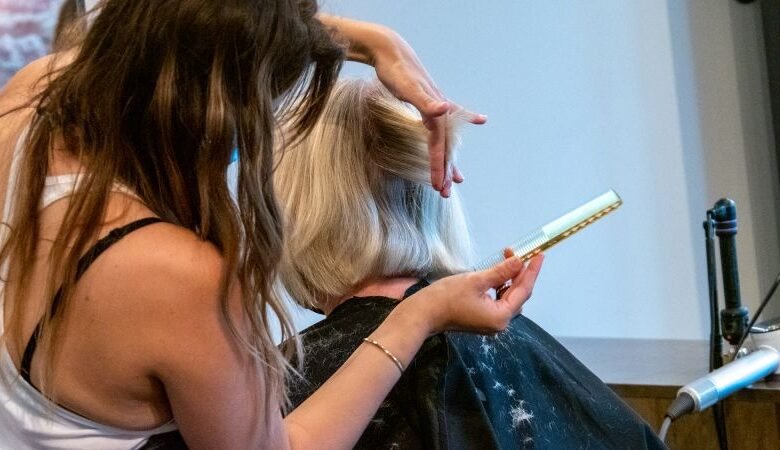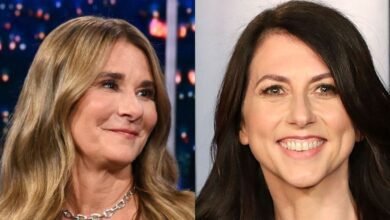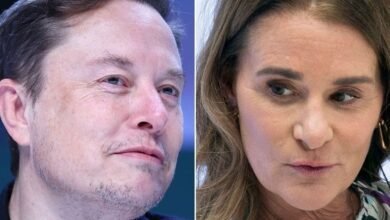Why are women’s haircuts more expensive than men’s?

London
CNN
—
It’s a familiar situation for many women: they go to the hair salon to get their hair cut and spend a small fortune, while their partners, brothers, uncles and friends spend considerably less at the barber or at the same salon.
But do women really pay more for the same service? Can any price difference be justified? Or is this another example of a “pink tax,” where products and services aimed at women cost more than those aimed at men for no discernible reason?
The available data certainly lends credibility to the frustrations of many women.
Last year, the average cost of a standard women’s haircut was $51.71, compared with $34.56 for a men’s haircut in the United States, according to transaction data provided exclusively to CNN by Square, a payment systems provider. The cheapest women’s haircut can be found in South Dakota for $31.43 — nearly one and a half times more than the $21.59 men paid for the cheapest haircut, also in that state.
Across the ocean, the data is also beautiful, ahem, well defined.
In 2020, a survey of UK consumers by YouGov found that women paid an average of £31.99 ($40.80) for a basic haircut, which can include a wash and blow-dry. That’s more than double the average £12.17 ($15.50) paid by men for the same or similar service.
Over the course of a year, women typically pay £135 ($172) for haircuts, while the average man spends £70 ($89), according to YouGov’s calculations. “While women tend to get their hair cut less frequently, this is still not enough to make up for the difference in prices paid,” Matthew Smith, YouGov’s head of data journalism, wrote at the time.
Carl Court/Getty Images
A man gets a haircut at a barber shop in Colchester, UK.
Still, much like a keratin-conditioned two-tone balayage: it’s tricky.
There are a potentially infinite number of haircuts, colors, and treatments offered by dozens of salons and barbershops. And these businesses employ people with varying levels of skill and training to work on clients with a huge variety of hair textures and lengths.
There is also a wide variation in the type of experience customers are looking for, according to Fred Jones, general counsel for the California Professional Beauty Federation, a trade group that has expanded since the pandemic to represent hair-care businesses and workers in every state.
“You have the high-end (service) where it’s a half-day experience and there’s champagne, bubbly, even ‘give me a quick shot, I’ll be here for 15 minutes and then I’ll leave,’” he told CNN.
This heterogeneity makes it “very difficult to figure out” whether women are paying higher prices simply because of their gender, Jones said.
“No one has an interest in discriminating in our industry… if a reputation gets out that your salon discriminates in any way, it will hurt your profits,” he added.
Tara Farmer, editor of Fash, a website that connects consumers with local businesses across the U.S., cites differences in typical hair length as a key reason why prices for women are higher than for men.
“Women’s haircuts typically take longer than men’s haircuts and often involve working with longer hair and using additional products, tools and styling techniques,” Farmer wrote in a January report on the subject.
The report found that the average cost of a women’s haircut ranges between $45 and $75 nationwide, while a men’s haircut ranges between $25 and $50, though it did not specify whether the typical women’s haircut includes extra services such as blow-drying.
Additional services, like hair color, can easily push prices into triple digits. The average cost of balayage highlights — a natural-looking hair color style that concentrates dye toward the ends — was $175 in 2022, according to data from Fash.
Raychel Brightman/Newsday RM/Getty Images
Women sit at sinks at Tapestry Salon & Spa in West Babylon, New York, in June 2020.
Caroline Larissey, chief executive of the National Hair & Beauty Federation (NHBF), a UK trade body, told CNN that women are more likely than men to ask for these additional services. “Women usually get shampoo, conditioner, treatment, as well as a cut and blowout, whereas men who go to the barber usually get a dry haircut,” she said.
Still, overall, women are still being charged about two and a half times more than men for an equivalent haircut, according to Larissey. However, there are “pockets” of the industry that have started charging clients based on time spent in the chair, she added, rather than delineating by gender — a move the NHBF has actively encouraged.
“We have to adapt as an industry,” Larissey said.
“Obsolete and old-fashioned”
Kristin Rankin, a hairstylist based in New York City, thinks we should do away with gender-based pricing altogether. “When you go to cosmetology school to become a hairstylist, you learn how to cut hair,” she told CNN. “This fallacy of learning how to cut men’s hair (versus) women’s hair is ridiculous.”
In 2016, Rankin founded the Dresscode Project, a nonprofit that trains hairdressers and salon owners to create gender-affirming environments for people who, in many cases, do not fit into the binary categories of “man” or “woman.”
Two ways to do this, they said, is to charge customers based on the length of their hair or the time it takes to cut it. “[Gender-based pricing]creates an atmosphere where it’s much easier to misgender people,” which can have “a huge psychological impact,” Rankin added.
Goldie x Bob is one of those hair salons that, five years ago, launched its gender-based price list. Now, “the client is paying for time and experience, and that has nothing to do with gender,” said Liz Burns, founder of the Denver-based salon.
Short haircuts are automatically scheduled for an hour, “but if it only takes 30 minutes, then (the client) only pays for 30 minutes. There is no set fee,” salon manager Ashlie Heath told CNN.
Before the switch, Goldie x Bob charged men with short hair an average of $60 for a basic wash and cut. Women were typically charged $85 for a similar service.
The difference, Burns told CNN, was explained by the fact that her female clients typically had longer hair, which required blow-drying and took longer to style. Clients with hair close to the head — who are usually men — require less styling and generally don’t mind letting it air dry, she said.
But “it felt stale and outdated to continue in that direction,” Burns said, adding that the shift to gender-neutral pricing was an attempt to “promote inclusion and fairness.” She has noticed an increase in men and nonbinary clients visiting the salon since the change, she said.
Rankin of the Dresscode Project would certainly approve. “Hair has no gender,” they said. “It’s literally dead cells on top of your head.”




